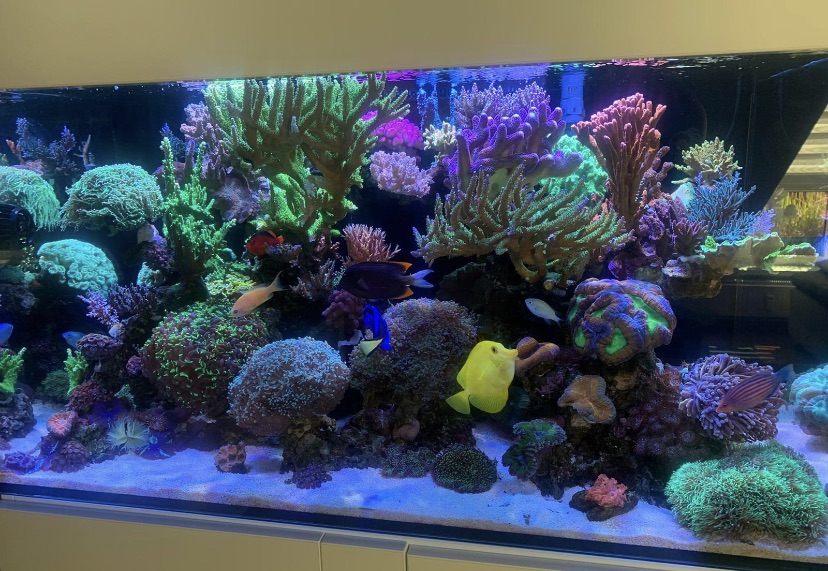Up until this point just about everything that has been done in preparation of setting up a new tank is pretty much the same. A tank, stand, skimmer, lights, etc are all going to be used regardless of what you want to put in the tank. However, after planning and getting all the equipment up and running, curing the live rock, and aquascaping the tank it is time to get to the nuts and bolts of reefkeeping and decide what kind of livestock will inhabit your little piece of the reef.
With so many beautiful and interesting invertebrates available the usual first thought for what will go into the tank is “everything”, a mixed tank. But after helping set up many tanks and helping many new hobbyists it is my opinion that at least to start this is often the most difficult tank to set up and maintain successfully long-term. The reason why this may not be the best choice to start is simple: despite most corals inhabiting a reef there is a wide variety of conditions under which they thrive.
As a result, in a small system, and despite our best attempts and wishes the conditions in a reef tank are significantly different than the conditions on an actual reef. Because of this, the specific micro-environments each coral will do best in and the often-neglected aspect of coral aggression, setting up a tank housing a wide variety of different invertebrates may not be the best idea for starting a new reef tank until some experience in these aspects is gained.
Soft coral tank
For most of us who have been doing this for a while, and my suggestion for most new hobbyists, starting with a soft coral tank was and is the way to go. When a lot of us started a soft coral tank was actually the only way to go as sps corals were virtually unavailable. Fortunately, then as now, soft corals are more forgiving than sps corals in terms of their requirements. That is, the tank’s water chemistry and water quality do not need to be perfect and the lighting can be less than optimal, and for the most part many of these corals will still do well and thrive.
Today there is also a wider variety of soft corals to choose from and unlike in the past not all soft corals are beige or brown. Now thanks to Australia and LED lighting there are some soft corals that can compete with many of the sps corals. From my perspective, soft corals also offer something that SPS and LPS corals do not offer: movement. While some sps corals with good polyp extension do show a bit of how the flow is in a tank, they cannot compete with the full-fledged ballet that the movement of a healthy soft coral can provide.
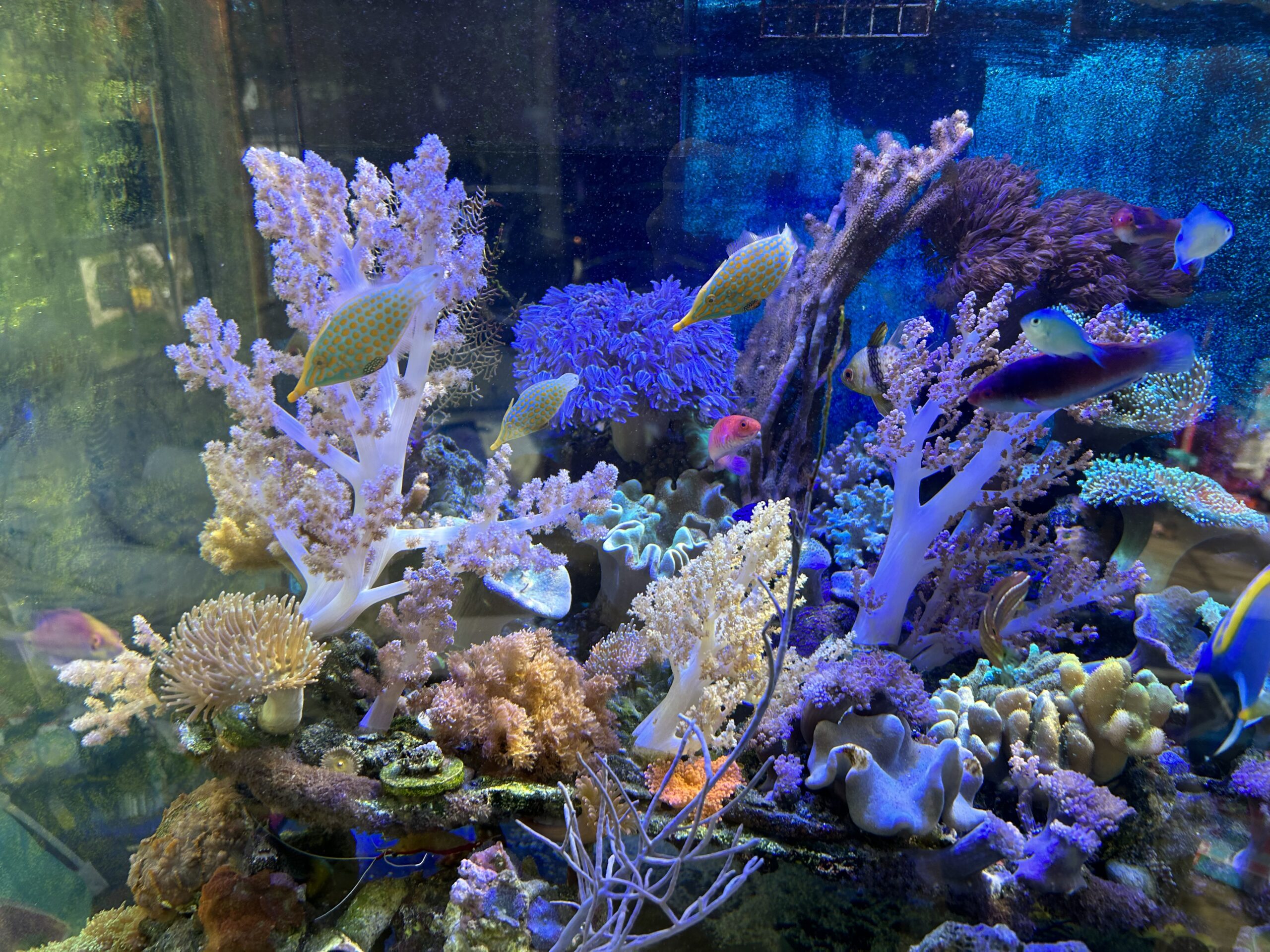
The extended polyps of some leather and Sinularia corals can be quite dramatic as they sway to and fro with the current in a tank. But even more compelling to watch are the polyps of some Xenia and Cespitularia corals as they open and close repeatedly like a kind of coral popcorn. In addition to a mixed soft coral tank housing a variety of soft corals it is also possible to start a tank housing a specific type of soft coral.
Zoa or mushroom-only tank
I have seen many beautiful tanks that just housed zooanthids or mushroom corals for example. These tanks may be a good choice to start in that it is usually easier to set up conditions perfect for one specific type of coral than for a variety. As an added advantage when these conditions are set up right, these corals will often grow quickly and completely fill a tank.
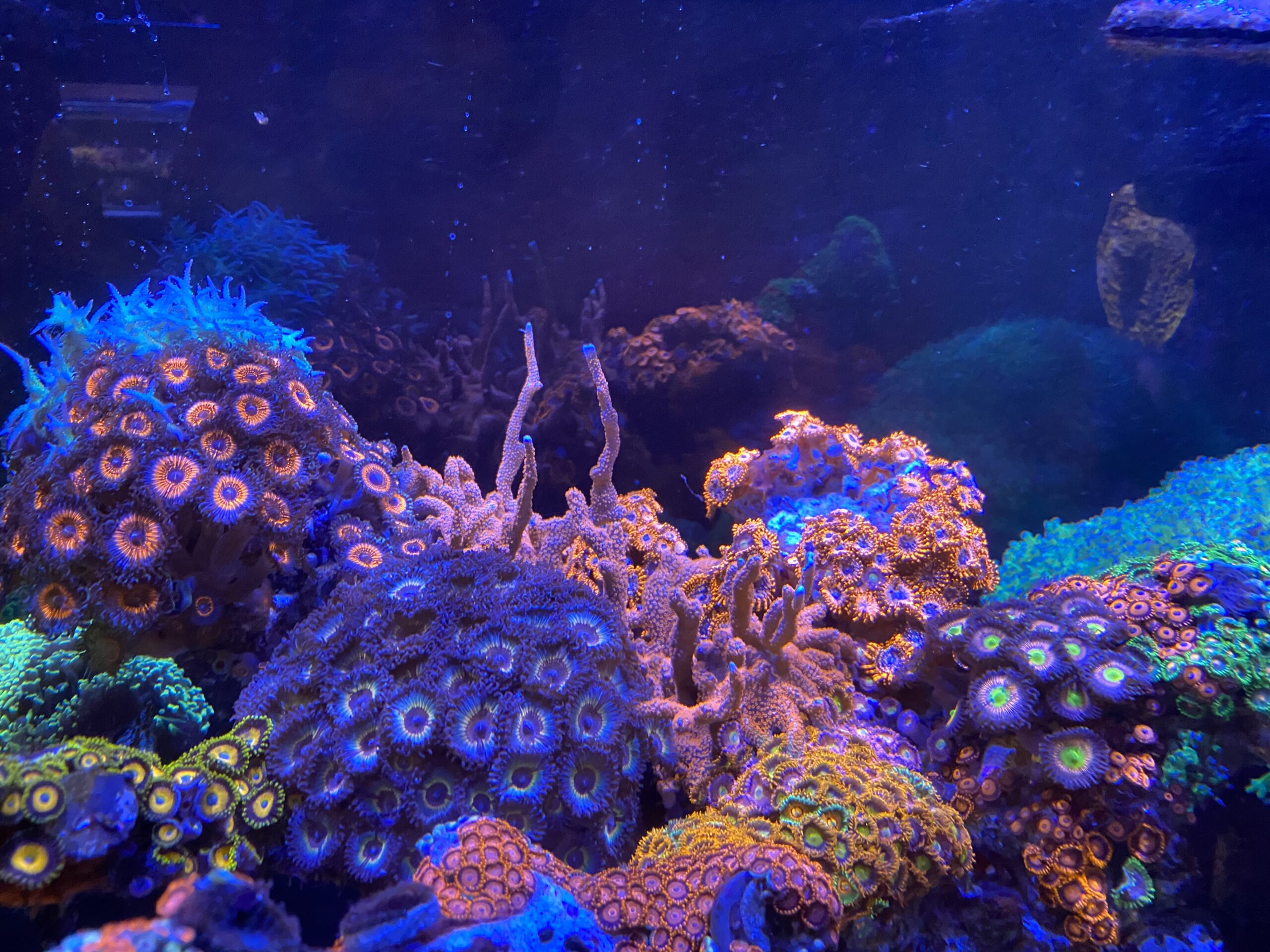
For these reasons alone this is a good place to start when considering what type of tank to have. But as great as these corals are there are some cons to keeping them. First, at present, obtaining some of the nicer ones can prove difficult as they are more difficult to propagate than their sps counterparts so not as many are regularly available. Also because demand for them has dropped off due to increased demand for sps corals, not every dealer or online vendor has a large inventory all the time.
These corals when doing well can also grow quickly in a tank and some like Xenia and Anthelia and Sarcophyton can fill the tank. And lastly, some of these corals produce terpenoids, which like the name suggests, think terpentine, are toxic to other corals. This is why some of these corals are difficult to house in a mixed reef tank. Despite this, it is still my opinion that a soft coral tank is a good first choice for a new hobbyist.
SPS reef tanks
While a soft coral tank is a good choice to start with in that it allows better for a new hobbyist to work the kinks out about the hobby, the majority of hobbyists now starting a new tank, start out with a SPS tank. While these corals in the past were considered to be the most difficult to keep, modern technology and the improved husbandry techniques we have developed have allowed many more of us to be successful with them. And due to their popularity, sps corals are now the most widely available.
These corals are also some of the most brightly colored corals out there and they have the added advantage of being aquacultured. Being aquacultured means that they have already been acclimated to captive conditions and they are also selected to have the best colors. Most of the best aquacultured specimens are available as frags, coral fragments, and this allows them to be grown out in a new tank.
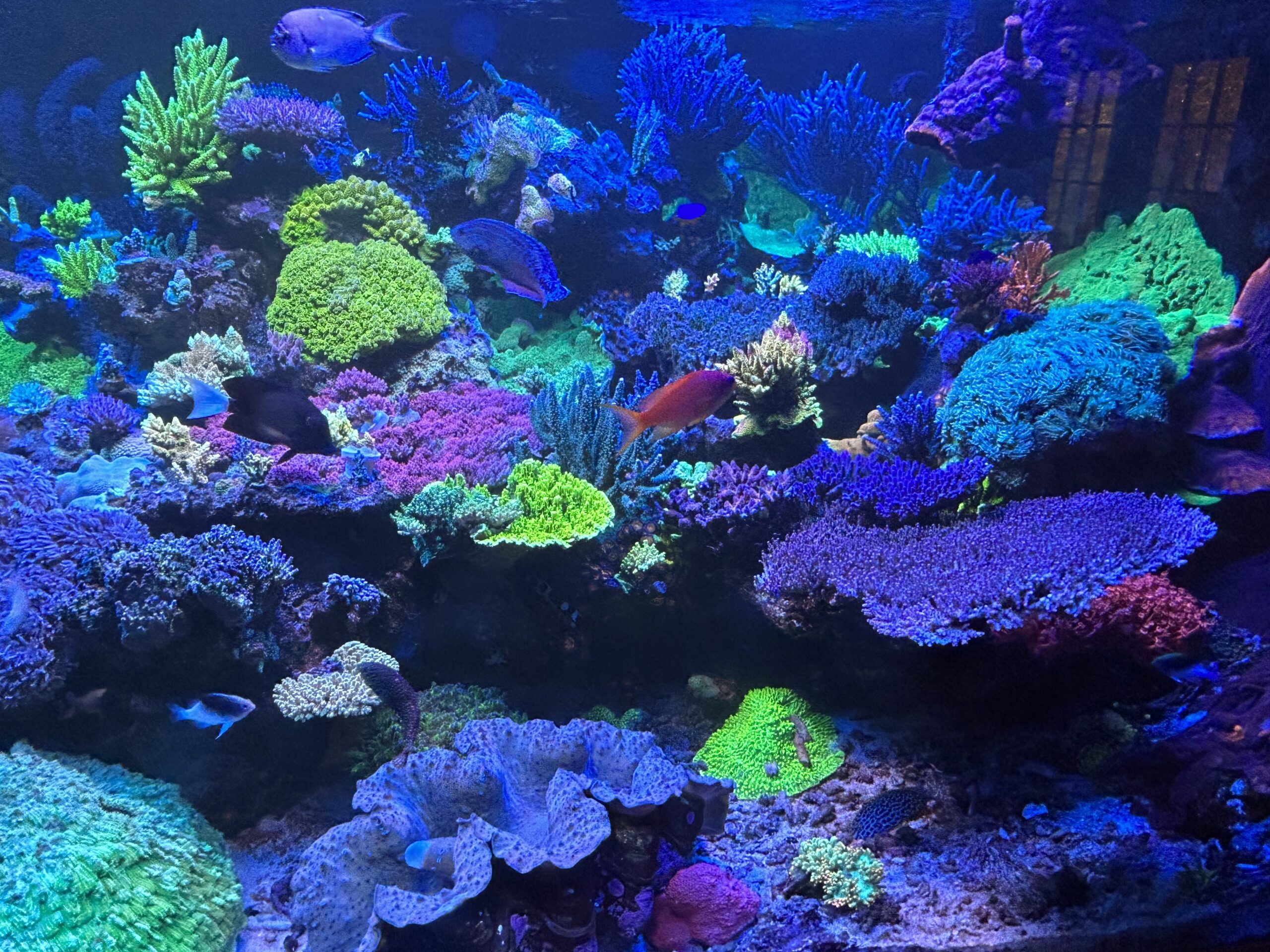
The aquacultured fragments have an additional advantage in that the individuals growing them take great pains to make sure that they are pest-free. Sadly, as many of us have learned there is nothing worse than setting up a new tank, only to have it destroyed by a pest infestation. Lastly, because these corals are now so widely kept, there are lots of sources of information to help a new hobbyist.
Despite all of these positive attributes there are some negatives for deciding to start with a sps tank. These corals are still more difficult to keep than soft corals and require slightly cleaner water and more stable conditions, which are often problematic when starting out. Also some of the most colorful of these corals are also on the expensive side and often the frags of them are very small. As a result, when trying to fill a tank on a limited budget, the tank at least at first may look empty. And unlike their soft counterparts, these corals are attacked more often by the many coral pests that are out there. While I am not trying to dissuade anyone from starting this way, I think all of these aspects should be considered.
LPS coral tanks
In between these types of tanks to start, in my opinion, would be a tank set up for LPS corals like Goniopora, Euphyllia, Acanthastrea, and Blastomussa for example. These corals are in my opinion slightly less demanding than their sps counterparts and share at least one characteristic of the soft corals. Due to corals like Goniopora and Euphyllia having large fleshy polyps these move in the tank’s flow like the soft corals. In the past few years, these corals have kind of had a renaissance in popularity as now they are being collected and propagated with brilliant coloration in mind. Because of this, a wide variety of colorful specimens of these are widely available.

These corals also usually come from deeper on the reef so the lighting does not have to be as intense and so will use less electricity. These corals also fill virtually every niche on the reef so they can be placed so that they fill every space in a tank. For all of these reasons, these corals are a good choice to start with. However, as with all corals, there are some negatives to keeping them.
First, and this really needs to be taken into account, they are some of the most aggressive corals out there, so adequate space needs to be allotted during placement. Also unlike the other types of corals, in my experience, they do best when fed regularly, especially Goniopora corals. While this usually is not a problem, care needs to be taken not to pollute the tank and also not to feed so much so that pests like aiptasia and Majano anemones, as well as Vermetid snail’s populations, explode. While these corals are a good choice to start a tank with, these factors need to be considered.
Fish Only With Live Rock tank (FOWLR)
Another option for starting a tank, and there are various reasons why this may occur, is to start with a fish-only tank with live rock. This is a good choice if you do not feel ready to have a reef tank or if you simply want to gain experience before moving to the next stage. This type of tank is just like a reef tank, except no corals are added. The live rock, aquascaping, and equipment are all the same just no corals. This type of tank replaced the old dead bleached coral and under gravel filter tank that was the way keeping a saltwater tank was done during its initial three decades.
Interestingly, when this type of tank was set up, we found that the survival of the fish was significantly better than it was when the under-gravel filter was used. This type of tank can house any type of fish, but if it will eventually become a reef tank then the choices in fish should be limited to reef-safe fish. Otherwise, these other fish will need to be removed before the corals are added.
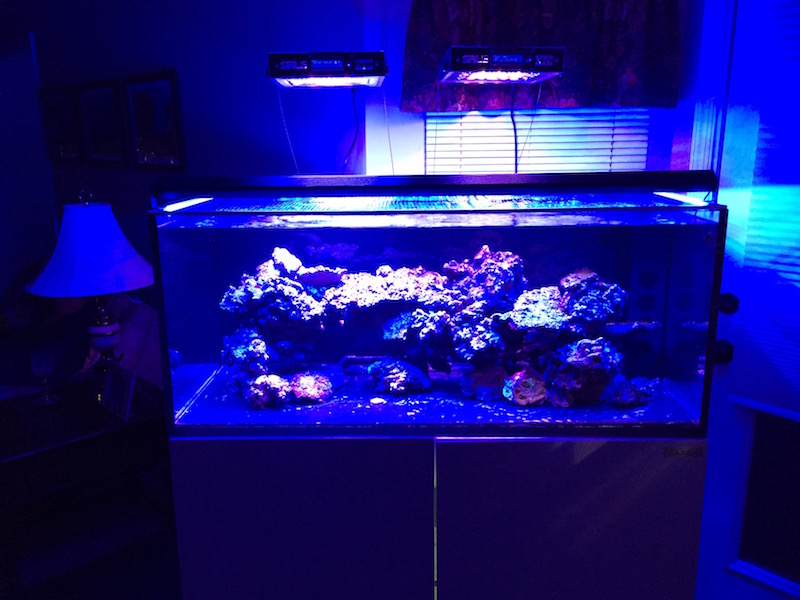
The above types of tanks that can be chosen are just a small sample of what is possible. Some additional options include a tank full of non-photosynthetic corals or anemones or my favorite a tank housing just three or four corals that are allowed to grow and fill the tank with one or two schools of fish like anthias or chromis. The possibilities are endless, but once a choice is made it should be stuck too as nothing is more expensive than constantly switching out a tank.
There are a lot of different choices to be made when deciding on what type of tank to set up. None of them are wrong or right as they all have advantages and disadvantages. The key is to start out with a tank that you will enjoy not only setting up but will enjoy over the long term. As I have said a reef tank is not like a TV in that you can’t just turn it on and forget about it. It is a living organism and requires care and time. So, when deciding on what type of tank you want take this into consideration.


